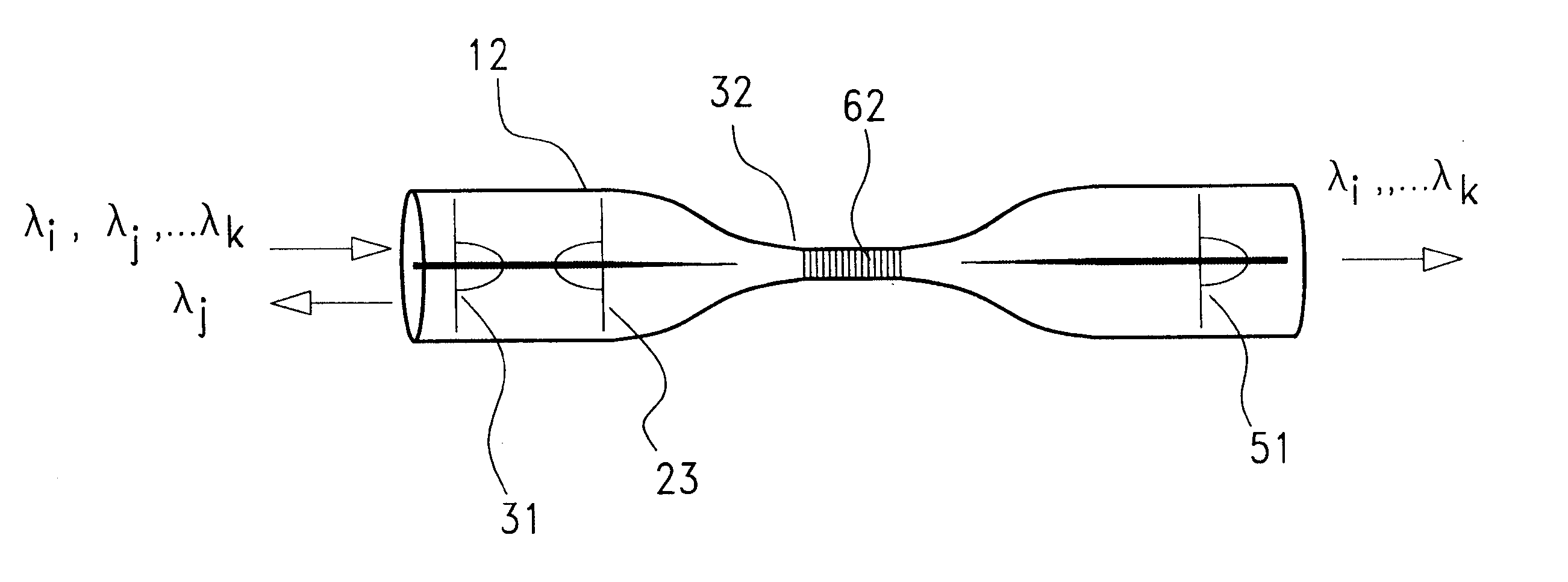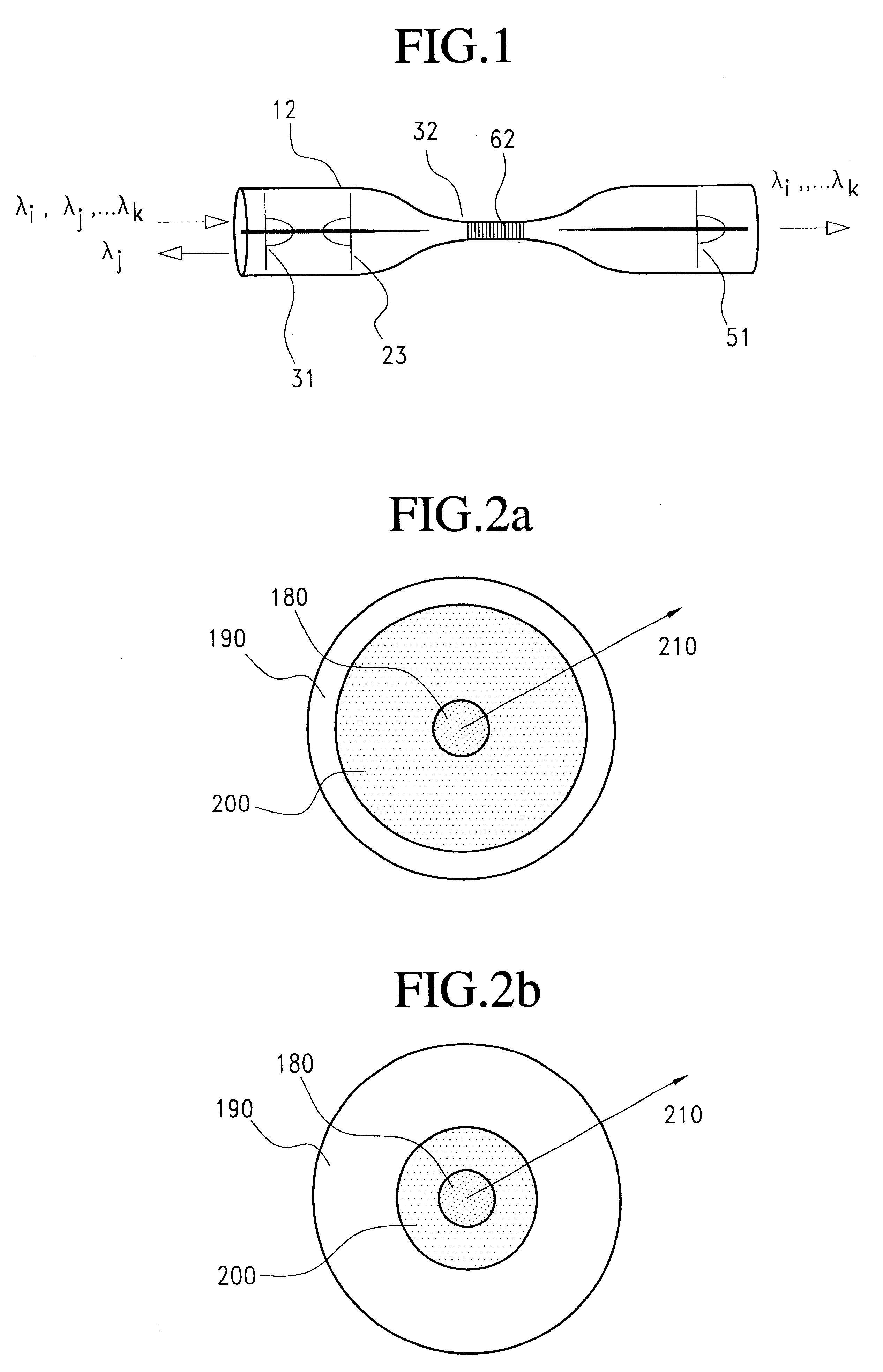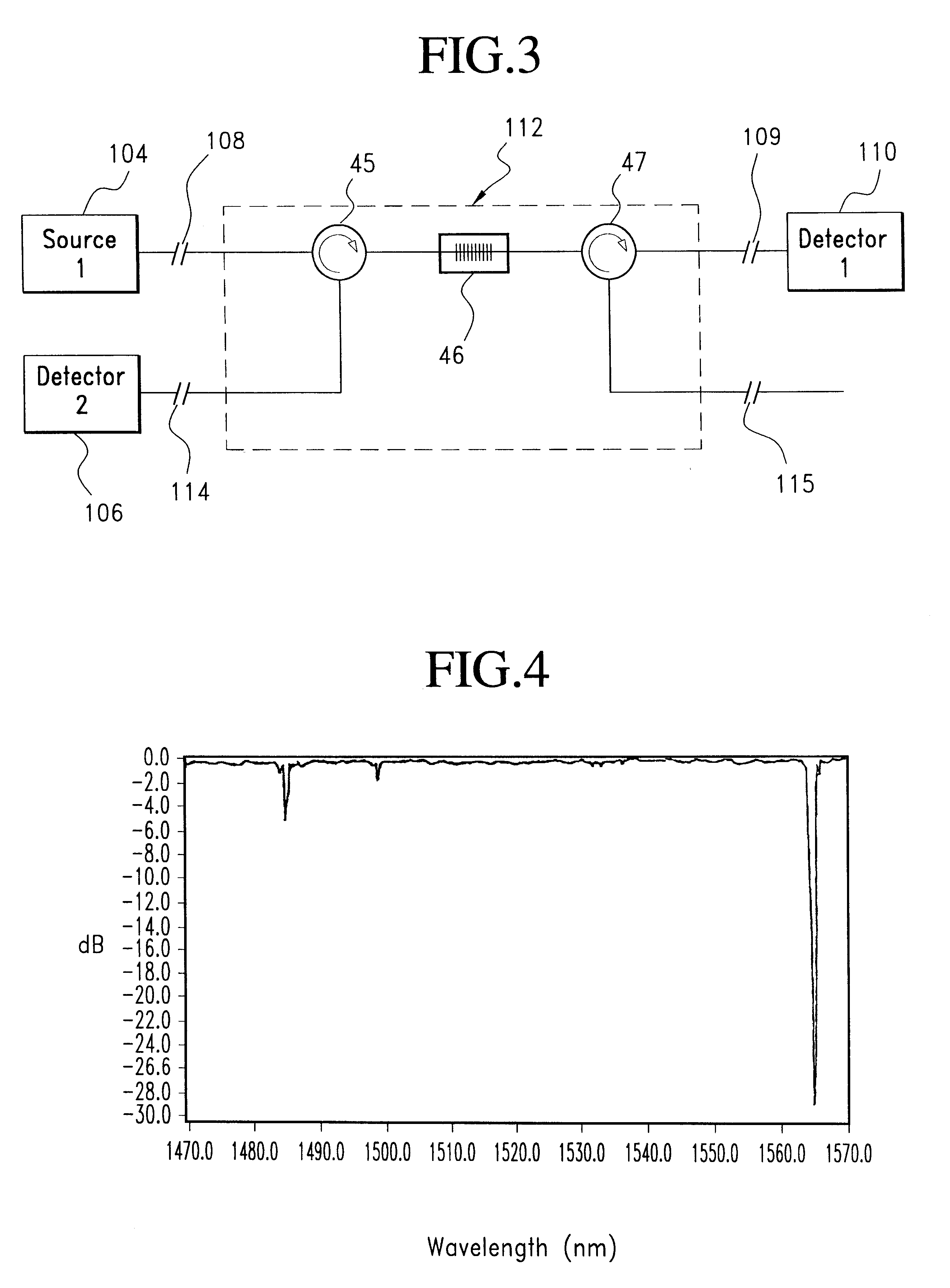Tapered fiber gratings and applications
a technology of tapered fiber and gratings, applied in the direction of optical waveguide light guides, instruments, optics, etc., can solve the problems of complex transmission of multiplexed signals without interfering wavelength signals or interference between them, unwanted off-wavelength signals affecting network reliability, and adverse effect on insertion loss and signal attenuation
- Summary
- Abstract
- Description
- Claims
- Application Information
AI Technical Summary
Problems solved by technology
Method used
Image
Examples
example 1
Add / Drop Filter
A low insertion loss device to selectively add or drop an optical channel of a particular wavelength with high efficiency is a building block for WDM networks. A functional representation of this device based on a tapered fiber grating 46 and circulators 45, 47 is illustrated in FIG. 3. The input optical fiber 106 carries N channels of information, each channel at a different center wavelength .lambda..sub.j. The tapered fiber grating 45 backreflects a particular channel .lambda..sub.i. This backreflected channel is routed onto the first output optical fiber 114 by a fiberoptic circulator 45, while all other channels travel uninterrupted through the aforementioned taper region to the second output optical fiber 109.
This device can also operate as an add filter by adding a second circulator 47 along the second output optical fiber 109, and using fiber 115 as the add input. A particular channel .lambda..sub.j is added to a fiber containing channels at other wavelengths ...
example 2
Tapered Doped-Cladding Fiber Grating Fabrication
One optical fiber whose index profile is illustrated in FIG. 2a, where the doped portion of the cladding 200 extends out to a diameter of 82 um and the core 180 is 9 um, is tapered such that the diameter is reduced from 125 um to 3.2 um over a length of approximately 25 mm The tapering is accomplished by pulling on opposite ends of the optical fiber while heating the optical fiber with an oxygen-hydrogen torch. The taper waist is subsequently exposed to a UV interference pattern generated by illuminating a silica phase mask of period 1.1 um with a focused beam of 244 nm cw illumination. This produces an optical interference pattern with a period of approximately 0.5 um. The grating is recorded for 5-20 minutes within a high pressure deuterium gas environment. The elongated region of the taper is subsequently epoxied to a temperature compensated prepackage to provide mechanical strength. The wavelength trace of light backreflected is il...
example 3
Four Channel Add-Drop Multiplexers
A static 4 channel add / drop multiplexer 301 can be fabricated by inserting two three port circulators 302, 303 along a throughput line 304, with four tapered fiber gratings 305, 306, 307, 308 placed in series between the circulators (FIG. 6). These four tapered fiber gratings direct the four selected wavelength channels into the circulators, which direct the backreflected channels into the add / drop loop 309. Once in the add / drop loop, the individual channels are added and dropped by four grating assisted mode couplers 310, 311, 312, 313. The backreflection wavelengths .lambda..sub.i, .lambda..sub.j, .lambda..sub.k, .lambda..sub.l of each tapered fiber grating 305, 306, 307, 308 is precisely matched to the drop wavelength of a corresponding grating assisted mode coupler 310, 311, 312, 313. Because of the limited spectral bandwidth traveling within the add / drop loop 309, the individual add / drop filters do not need to exhibit a drop-backreflection spli...
PUM
 Login to View More
Login to View More Abstract
Description
Claims
Application Information
 Login to View More
Login to View More - R&D
- Intellectual Property
- Life Sciences
- Materials
- Tech Scout
- Unparalleled Data Quality
- Higher Quality Content
- 60% Fewer Hallucinations
Browse by: Latest US Patents, China's latest patents, Technical Efficacy Thesaurus, Application Domain, Technology Topic, Popular Technical Reports.
© 2025 PatSnap. All rights reserved.Legal|Privacy policy|Modern Slavery Act Transparency Statement|Sitemap|About US| Contact US: help@patsnap.com



